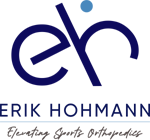[kc_row use_container=”yes” force=”no” column_align=”middle” video_mute=”no” _id=”616759″][kc_column width=”12/12″ video_mute=”no” _id=”538012″][kc_column_text]
The bones of the shoulder consist of the shoulder blade (also called scapula , the upper arm (humerus) and the collarbone (clavicle). The shoulder blade is a triangular and flat bone which slides along the chest. It has three different processes and the glenoid cavity (socket) on the lateral aspect which forms part of the gleno-humeral joint

. The scapula spine can be felt at the back as a transverse process and becomes the acromion laterally.  The acromion could also be called roof of the shoulder. The coracoid process can be felt on the front and serves as ligament and muscle attachment.
The acromion could also be called roof of the shoulder. The coracoid process can be felt on the front and serves as ligament and muscle attachment.  The scapula slides long the chest and allows circular and extended movements of the shoulder joint. The humerus at the top consists of the head which articulates with the glenoid and the greater and lesser tuberosities which serve as attachments for the rotator cuff muscles. The transition of the head into the shaft is called the surgical neck and the border between the articular cartilage of the head and bone is called the anatomical neck. Fractures often occur around these anatomical areas. The collarbone or clavicle acts as “transmission” between the trunk and the upper extremity. It articulates with the acromion and forms the acromio-clavicular joint and the sternum forming the sterno-clavicular joint. It is an s-shaped bone. So there are four joints that ‘form’ the shoulder joint: glenohumeral ball and socket between humeral head and glenoid; acromio-clavicular between acromion and clavicle, sterno-clavicular between clavicle and sternum and scapula-thoracic between scapula and chest wall.
The scapula slides long the chest and allows circular and extended movements of the shoulder joint. The humerus at the top consists of the head which articulates with the glenoid and the greater and lesser tuberosities which serve as attachments for the rotator cuff muscles. The transition of the head into the shaft is called the surgical neck and the border between the articular cartilage of the head and bone is called the anatomical neck. Fractures often occur around these anatomical areas. The collarbone or clavicle acts as “transmission” between the trunk and the upper extremity. It articulates with the acromion and forms the acromio-clavicular joint and the sternum forming the sterno-clavicular joint. It is an s-shaped bone. So there are four joints that ‘form’ the shoulder joint: glenohumeral ball and socket between humeral head and glenoid; acromio-clavicular between acromion and clavicle, sterno-clavicular between clavicle and sternum and scapula-thoracic between scapula and chest wall.
[/kc_column_text][/kc_column][/kc_row]
